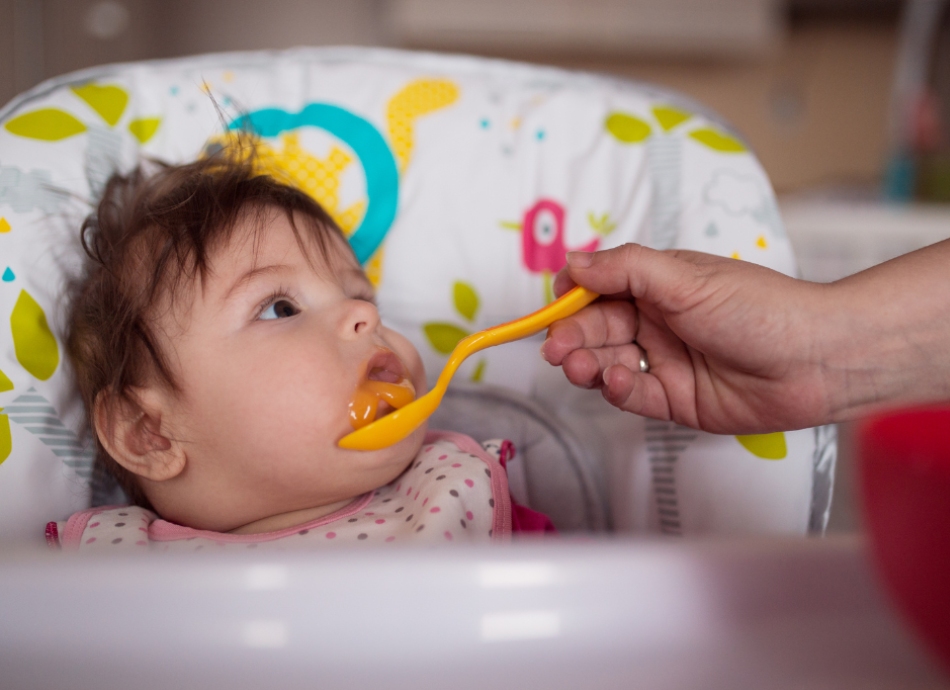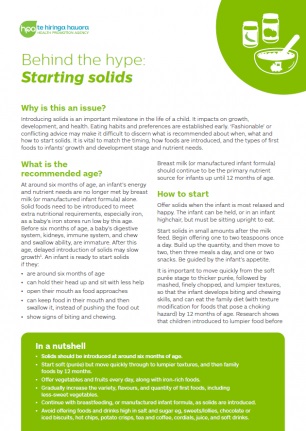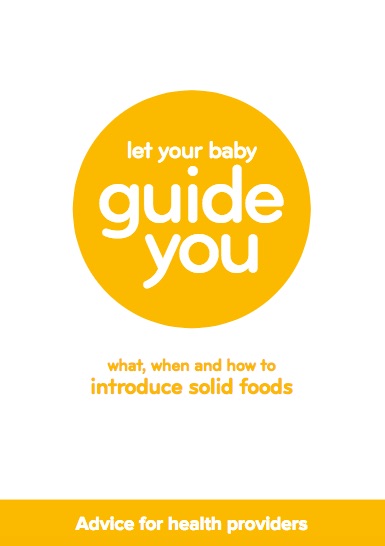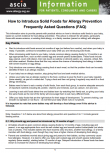Eating solid food is a new experience for your baby. Here are some things to consider when starting solids.
- Offer solids when your baby is most relaxed and happy.
- Hold your baby while you feed them or sit them in a baby high chair.
- Use a small teaspoon and put the food in the middle of their tongue.
- Start with small amounts – a half to 2 teaspoons at first, then slowly increase the amount until your baby is having about 3–4 teaspoons at a meal.
- Your baby may spit out their first solid foods as they learn to get the food to the back of their mouth to swallow it. Be patient and give them time.
- Try one new food every 2–4 days. If they don't like the food the first time, wait a few days and try again with a smaller amount.
- Throw away any uneaten food left on your baby's plate.
Types of foods
Your baby’s first foods need to be plain, smooth and soft. Babies like the plain taste of milk, so first foods also need to be plain. Don't add salt, sugar or other sweeteners, soy sauce, cream, butter or margarine to your baby's food.
Don't give your baby honey. It may contain bacteria that can make young babies sick. Homemade food can be frozen in ice cube trays and used in the next 3–4 weeks.
The following are examples of the best solid foods to start feeding your baby. To puree baby's food, use a blender or push food through a fine sieve.
| Food |
How to prepare |
|
Cereal or rice
|
Use iron-fortified baby rice or infant cereal. Ensure the cereal you choose is suitable for your baby's age. Prepare the cereal using breastmilk or infant formula as per the instructions on the package. You can also puree plain cooked rice or feed your baby congee.
|
|
Vegetables
|
Cook and puree vegetables. Remove skins on vegetables such as kumara, potato and pumpkin. Legumes such as peas, lentils and chickpeas must be well cooked and pureed.
|
|
Fruits
|
Remove the skins, pips or seeds from fruit. Puree the fruit. Cook to soften if needed.
|
|
Meats
|
You can introduce cooked and pureed chicken, fresh fish, lamb, beef or pork. Do not give salty meat such as corned beef or tinned fish as first foods.
|









